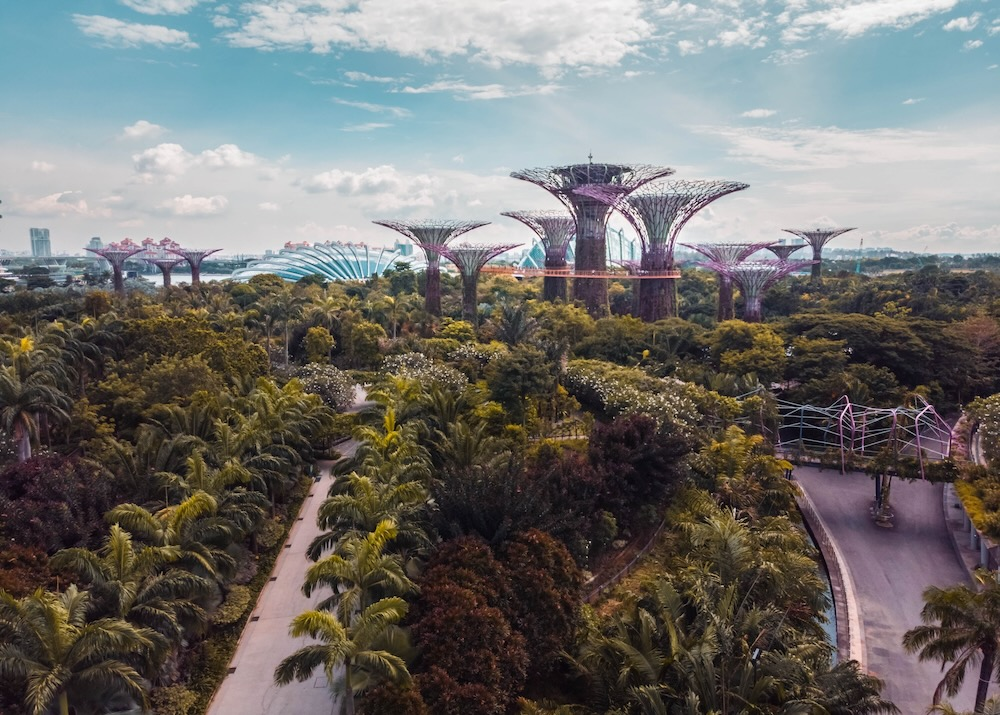Luxurious sky rises, high-tech buildings and machinery have no place in a true utopian reality, and yet it’s all we’ve ever seen in our accepted versions of a future “perfect world”
Even before today’s modern utopian films like Tomorrowland and Black Panther, we were told legends of Atlantis, where our perceived vision of utopia was an “evolved” society filled with advanced technology, marble halls, and the elite feasting on foods from around the world.
By romanticizing the idea that in order to live in harmony we have to live in luxury, we’ve created unrealistic goals of wealth, achievement and development, which are only achievable by the few and damaging to many. A true utopia is defined as a stable life for all its citizens, and to have a future that addresses all human needs, we need to factor nature into the equation.
The evolution of utopia
The concept of utopia began as an imaginary society where people lived their lives in a perfect environment governed by laws that provided happiness to everyone. Its origins can be traced back to 375 BC when Greek philosopher Plato released his influential political dialogue “The Republic”. The dialogue was one of the earliest known recordings of man questioning the existing political regimes and proposing a series of alternate visions of a perfect city.
Utopia resurfaced in the modern world through famous English philosopher Thomas Moore. He revived a wave of utopian thought in the 16th century, where he influenced the life and works of many future philosophers and novelists and helped create political movements like socialism. Moore’s 1516 novel, Utopia showed a world with simple laws, communal ownership, and equal education for everyone. After its release, many authors took his ideas and used them to create a new literary genre that still exists today.
Between Moore and modern day, we saw the evolution of utopia begin to explore futuristic societies where discovery, knowledge and modern science were highly praised. With a greater reach of information came a craving to achieve this version of utopia; we began to believe that our infinite discovery of resources and using them for development would unlock our true utopian society. We never thought to ask what we were trading for our technological utopia, one that is built on quick extraction for instant gratification. Photo by Victor on Unsplash
Photo by Victor on Unsplash
Humanity’s want for more
On paper it seems like we’ve accomplished perfection: a utopian world with flying aircrafts, information at our fingertips through the Internet, as well as luxurious homes filled with our heart’s every desire. Are we happy yet? Did our world achieve the greater good for all? Did we build a sustainable future for our lifetime and our children’s?
Our version of utopia missed the mark. We maintained the existing divide between “man” and pried it open further with “advancement.” We’re less connected than ever, we’re more in debt, and we’ve sacrificed our planet’s well-being in the meantime.
These fantasies of utopia bound us to an unsustainable (and inhospitable) future, and it’s time to let go of the idea of floating freeways and self-driving cars, and instead reimagine an achievable utopia, one that goes beyond the material things and is rooted in what we really seek: belonging, acceptance, security, nourishment, contribution and fulfillment.
 Photo by Benjamin Combs on UnsplashUtopia is smaller-scale than we think
Photo by Benjamin Combs on UnsplashUtopia is smaller-scale than we think
What if we were never meant to do more than live simply and nurture our environment? What if the search for utopia was a dead-end? What if there isn't one utopia for all?
Utopia can never truly be fulfilled, not when the word means something different to everyone. This is what makes governing large populations nearly impossible. We can’t meet everyone’s needs in a country of hundreds of thousands or millions; we have to think smaller. Utopia isn’t one thing for everyone, but rather a set of diverse solutions that cater to each communities’ environmental and personal needs. It can be an eco-village with garden plots on every corner, living in smaller spaces together, reestablishing biodiversity around us, and letting go of material achievement.
The only reason we haven’t scratched the surface of a plausible small-scale sustainable community yet is because there hasn’t been enough “reward” to outweigh the risk of trying something new. But now, with climate change upon us, the risk is higher than ever and it might be the perfect time to start seeing the potential of a future with nature and people at its core.
With a lack of housing, jobs and access to quality food, many have sought out alternative methods of living. We’ve already seen the beginnings of communal living situations, off-grid communities, and small-scale farmers and growers who have shown us that we are capable of a new way of life. Through extreme circumstances, we’ve been pushed into thinking differently about the planet and how we co-exist with it. We’ve seen the benefits of collaboration and cooperation over competition, of the abundance we can experience when we work together, and that we feel most uplifted when we live surrounded by nature.
The future doesn’t have to be riddled with humans in spacesuits, mining and extracting precious materials, or utilizing nuclear energy and weapons; a fantastical overtaking of nature can never last long-term. Utopia can only exist within the means of what our planet and people can offer. And that can be enough.

